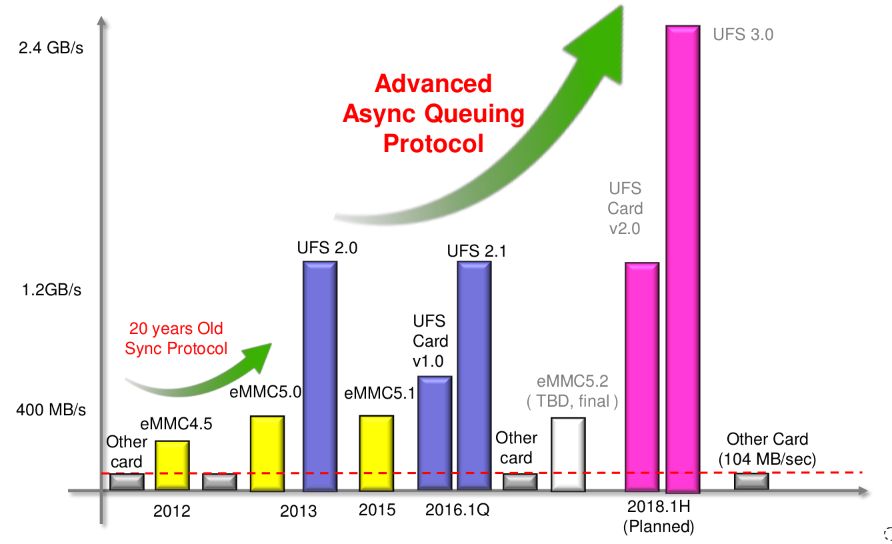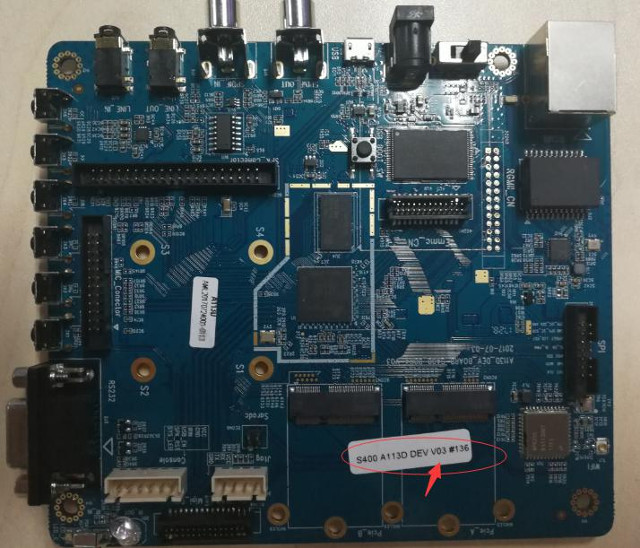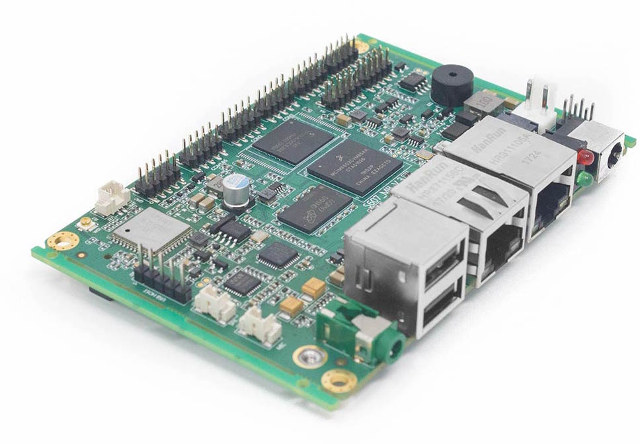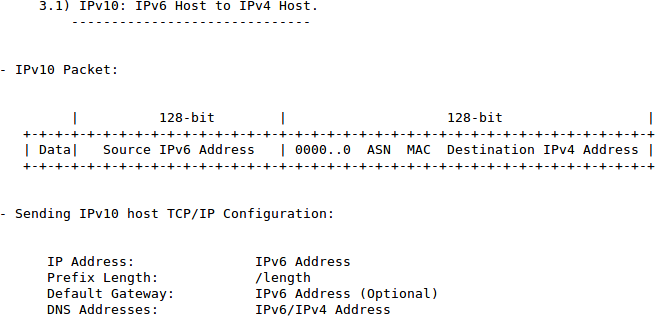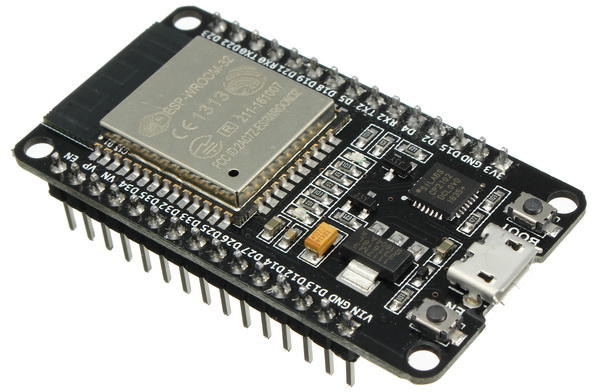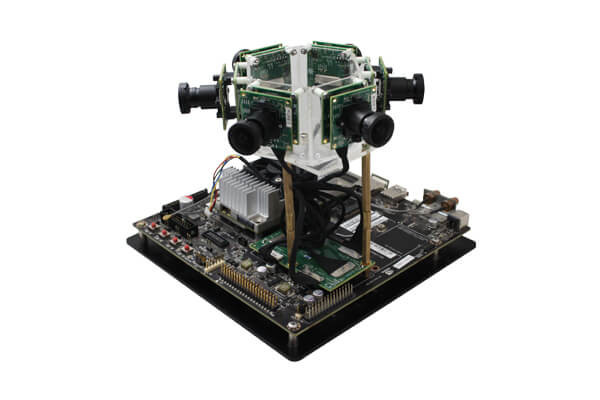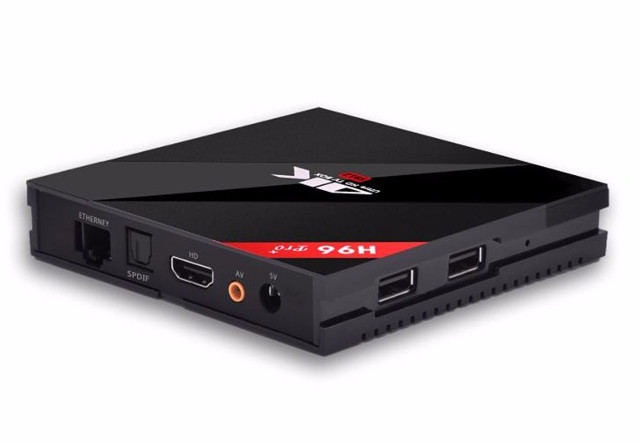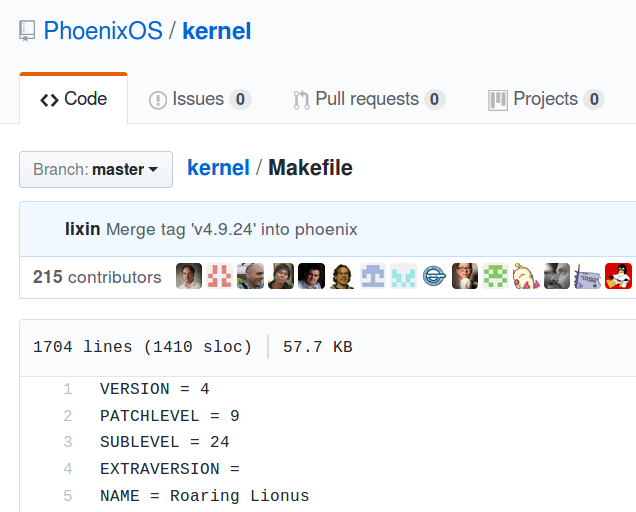All my devices still rely on eMMC flash for storage, but premium smartphones, for example, make use of UFS 2.0/UFS 2.1 flash storage with performance similar to SSD, with Samsung UFS 2.0 storage achieving up to 850MB/s read speed, 260 MB/s write speed, and 50K/30K R/W IOPS. UFS 3.0 promises to roughly double the performance of UFS 2.0/2.1 with transfer rates of up to 2.4 GB/s, and separately, the UFS Card v2.0 standard should deliver UFS 2.1 performance on removable storage. Several Chinese and Taiwanese websites, including CTimes and Benchlife, have reported that companies have started getting UFS 3.0 & UFS Card v2.0 licenses from JEDEC, and Phison is working on a controller to support both new standards, and scheduled to launch in 2018. Premium smartphone SoC are only expect to support UFS 3.0 in 2019 and beyond, and hopefully by that time eMMC will have been replaced by UFS 2.0/2.1 […]
Amlogic A111, A112 & A113 Processors are Designed for Audio Applications, Smart Speakers
Amlogic processors are mostly found in TVs and TV boxes, but the company is now apparently entering a new market with A111, A112, and A113 audio processors. I was first made aware of those new processors through Buildroot OpenLinux Release Notes V20170831.pdf document posted on their Open Linux website, where two boards with Amlogic A113D and A113X are shown. First, S400 board with the following key features/specifications: SoC – Amlogic A113D CPU System Memory – 1GB DDR3 Storage – 512MB SLC NAND flash Display I/F – MIPI interface Connectivity – Gigabit Ethernet SDIO WiFi/BT (AP6356S) Audio SPDIF_IN/SPDIF_OUT LINE_IN/LINE_OUT 2x Audio headers (MIC_Connector & SPK_Connector) USB – 1x USB 2.0 OTG Expansion – 2x PCIe ports Misc – 6x ADC Keys, IR_IN/IR_OUT, UART Interface (RS232) The second S420 board is based on A113X SoC, and comes with less features (no display, no Ethernet, no PCIe…), less memory: SoC – Amlogic A113X […]
Habey EMB-2200 Pico-ITX board is Designed for Industrial IoT Gateways & HMI Panels
Habey USA has sent out an email to announce their EMB-2200 industrial grade Pico-ITX board powered by NXP i.MX6UL processor with up to 512 MB DDR3, WIFi and Bluetooth, optional PoE support, LCD interface, etc…, and designed for IoT gateways, HMI applications, and other embedded applications. Habey EMB-2200 board specifications: SoC- NXP i.MX 6UltraLite single core ARM Cortex-A7 processor at 528/696MHz System Memory – 128, 256 or 512MB RAM Storage – Various options of eMMC, iNAND or SLC NAND flash (Default: 8GB eMMC flash) Display – 1x 24-bit Parallel LCD (RGB) interface up to 1366×768, 4-wire touch interface Audio – 1x 3.5mm Line OUT jack Connectivity – 2x 10/100 Mbps Fast Ethernet ports, WiFi and Bluetooth module USB – 2x USB 2.0 ports I/Os – 5x RS-232 header, 2x CAN Bus, 2x USB2.0, 1x USB OTG Configurable GPIO, SPI, I2C Expansion – 1x full-size mini-PCIe with USB connection for cellular […]
IPv10 Draft Specification Released for IPv6 <-> IPv4 Communications
The first time I used IPv6 was in 2000 for my final year project, and for many years, we’ve been told that IPv4 32-bit address space was running out, and a transition to 128-bit IPv6 address was necessary, and would happen sooner rather than later. Fast forward to 2017, I’m still using IPv4 in my home network, and even my ISP is still only giving a dynamically allocated IPv4 address each time we connect to their service. Based on data from Google, IPv6 adoption has only really started in 2011-2012, and now almost 20% of users can connect over IPv6 either natively or through IPv4/IPv6 tunneling. But today, I’ve read that IPv10 draft specifications had been recently released. What? Surely with the slow adoption of IPv6, we certainly don’t need yet another Internet protocol… But actually, IPv10 (Internet Protocol version 10) is designed to allow IPv6 to communicate to IPv4, […]
Geekcreit ESP32 Development Board Goes for $4 Shipped (Promo)
While you may have thought Wemos Lolin32 board selling for $6.9 plus shipping was already a decent deal, you can now buy a breadboard friendly ESP32 development board for the normal price of ES8266 board thanks to a promotion on Banggood selling 1,000 pieces of “Geekcreit ESP32” board for $4.09 including shipping, and valid until September 10, or while stock lasts. It looks to be roughly the same design as the fake NodeMCU ESP-32s board I once spotted: Wireless Module – ESP-WROOM-32 with Espressif ESP32 dual core processor with 802.11 b/g/n WiFi and Bluetooth 4.0 LE Expansion – 2x 19 pin headers with GPIOs, Analog inputs (ADC), UART, I2C, VP/VN, etc…; breadboard compatible USB – 1x micro USB port for power and programming Misc – BOOT and EN buttons, red (power) and blue (GPIO2) LEDs Power Supply – 5V via USB or Vin pin Dimensions – 51.4 x 28.3 mm […]
e-con Systems Introduces a 360° Camera Kit for NVIDIA Jetson TX1/TX2 Development Boards
e-con Systems has previously launched MIPI cameras for Jetson TX1/TX2 development kit, but the company has now announced e-CAM30_HEXCUTX2, a kit with an adapter board, and six synchronized HD cameras connected that can be used for video surveillance, or robots requiring a 360° or “720°” field of view. The kit is comprised of the following elements: e-CAMHEX_TX2ADAP adapter board for connecting six cameras through Jetson boards’s J22 connector supporting up to 6x 2-lane MIPI CSI-2 cameras 6x 3.4MP MIPI CSI2 low light camera board with interchangeable S-mount lens, and featuring ON Semiconductor AR0330 color CMOS image sensor; each camera supports VGA to 1080p/3M resolution up to 30 fps 6x 30cm custom micro coaxial cable The kit operates at 5V, and requites between 5.33 to 8.10 watts, the later while streaming 6 Cameras on Jetson TX2. Software support is implemented through a Linux camera driver (V4L2) on top of NVIDIA’s JetPack […]
H96 PRO Plus Amlogic S912 TV Box with 3GB RAM, 32GB Storage Sold for $48.49 (Promo)
H96 Pro+ is a Amlogic S912 TV box with 3GB RAM, 32GB storage, that’s similar to R-Box Pro 3G TV box I reviewed, and Banggood has now a promotion for the box for just $48.49 shipped with about 850 pieces left in stock. H96 Pro+ specifications: SoC – Amlogic S912 octa-core ARM Cortex A53 processor @ up to 1.5 GHz with Mali-820MP3 GPU System Memory – 3 GB DDR3 Storage – 32 GB eMMC flash + micro SD slot up to 32GB Video Output – HDMI 2.0a with HDR and CEC support up to 4K @ 60 fps, and AV port for composite output Audio Output – HDMI, AV (stereo audio), and optical S/PDIF Video codecs – VP9-10 profile 2 up to 4K @ 60 fps, H.265 MP-10@L5.1 up to 4K 60fps, H.264 AVC up to 4K @ 30 fps, H.264 MVC up to 1080p60, MPEG-4, WMV/VC-1 SP/MP/AP, AVS-P16(AVS+)/AVS-P2 JiZhun […]
Linux 4.9 Kernel Source Code Released for Phoenix OS Android Desktop Operating System
Phoenix OS is one of the last options left for people wanting to run Android with desktop optimizations on their computer. The problem is that so far, it was fully closed source, and the company refused to comply with the Linux kernel’s GPLv2 license, despite part of the project being based on Android-x86 work. The community also wanted to get involved to improve hardware compatibility with graphics cards, wireless modules / dongles, and other peripherals. However, without source code, nothing could be done, and a petition was launched on Change.org asking Chaozhuo, the company behind the project, to release the Linux kernel code. After over 300 signatures was reached in the petition, the company did push Linux 4.9.24 to Github, and after verifying there was indeed some changes compared to Android x86 kernel, the community declared victory. They are however trying to make the company develop the kernel in the […]


